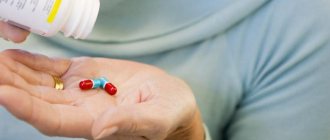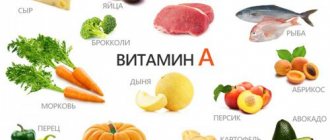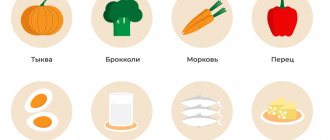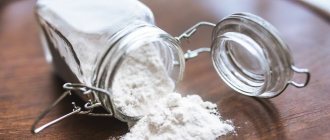Since the discovery of this organic compound, vitamin B2 has been called an important source of vitality and energy.
This vitamin is an important part of general metabolism and energy metabolism. In addition, this compound is involved in additional life support reactions of the human body. Without a regular intake of vitamin B2 into the internal environment, it is impossible to achieve good health. Despite the fact that a small amount of this vitamin can be synthesized in the lumen of the large intestine, this volume is not enough to meet the body’s needs. That is why it is recommended to constantly replenish the daily requirement for this vitamin from the outside. And if you don’t know where to buy vitamin C, which is also necessary for the body, go to our online pharmacy.
Physicochemical characteristics of the vitamin
Riboflavin (vitamin B2) belongs to the category of water-soluble organic compounds that do not tend to accumulate in living tissues of the human body. In addition, riboflavin, like other water-soluble vitamins, is eliminated from the body naturally through the kidneys in a short period of time.
In order for a person not to encounter clinical manifestations of riboflavin hypovitaminosis, this substance must be obtained daily from food sources. This compound has a pronounced yellow-orange color, so riboflavin is very often used as a natural dye. The chemical structure of riboflavin is resistant to acids, but not resistant to alkalis. Under the influence of ultraviolet radiation, this compound is destroyed.
Structure of riboflavin and its photolysis products
The presence of active double bonds in the cyclic structure of riboflavin determines some of the chemical reactions underlying its biological action. By adding hydrogen at the site of double bonds, colored riboflavin easily turns into a colorless leuco compound. The latter, giving up hydrogen under appropriate conditions, again turns into riboflavin, acquiring color. Thus, the chemical features of the structure of vitamin B2 and the properties determined by this structure predetermine the possibility of vitamin B2 participating in redox processes.
In redox reactions, semiquinone forms of riboflavin also arise, in the form of which riboflavin functions as an electron carrier. The study of riboflavin has led to the synthesis of more than 100 analogues. But among all the compounds obtained, few biologically active forms were found.
The role of vitamin B2 in the body
Like other B vitamins, riboflavin plays an important role in the functioning of the central and peripheral nervous system. Other important properties of this organic compound include:
- Positive effect on visual function, regulation of the process of accommodation of the eyeball, as well as prevention of the development of cataracts.
- Regulation of metabolism in the cells of the central nervous system, reducing the negative effects of stress on the body.
- Regulation of fat metabolism, normalization of the process of bile outflow.
- Improved absorption of vitamin B6 (pyridoxine).
- Normalization of the blood clotting process, prevention of thrombosis.
- Improving metabolism in the skin and hair follicles, preventing the early formation of wrinkles.
Historical information
For the first time, the picture of vitamin B2 deficiency, accompanied by other types of vitamin deficiency, was obtained in animals by N.I.
Lunin in 1880. It was discovered that mice cannot live and grow on a synthetic diet of a mixture of proteins, fats, carbohydrates and mineral salts, but develop and live well when receiving whole milk. This gave reason to believe that milk contains substances necessary for life in small quantities, which were later called vitamins (1912). Vitamin B2 was first established as a nutritional factor, the deficiency of which causes growth retardation in animals. It was finally isolated (separated) from other B vitamins in 1935, in animal experiments showing that lactosflavin did not cure canine pellagra or rat pellagra. By attempting to isolate vitamin B2 from eggs, Kuhn et al. in 1933 obtained a yellow, water-soluble, fluorescent pigment that had the property of supporting growth in animals. It was later found that flavins obtained from various sources are identical to each other and are growth-supporting vitamin B2. The structure of riboflavin was finally established in 1935, when Kagger and Kuhn independently synthesized this vitamin.
Daily requirement depending on age
In order for the human body to function harmoniously, it must regularly receive vitamins, the volume of which corresponds to the daily requirement. Depending on age, the body’s need for riboflavin is as follows:
- From birth to six months - 0.5.
- 7-12 months - 0.8.
- From 1 year to 3 years - 0.9.
- From 4 to 7 years - 1.2.
- From 8 to 10 years - 1.5.
- From 11 to 14 years old - 1.6.
- From 15 to 18 years old - 1.8.
- From 19 to 60 years old - 1.5.
- From 61 to 75 years - 1.5.
- Over 77 years old - 1.4.
The daily requirement for riboflavin in women during pregnancy and breastfeeding is 2-2.2 mg.
Features of interaction with other substances
The riboflavin content decreases when taking:
- ethanol;
- barbiturates;
- phenothiazine;
- antidepressants (tricyclics);
- tubular secretion blockers;
- thyroid hormones.
Vitamin B2 absorption increases when taken in parallel:
- probenecid;
- anticholinergic drugs.
Compatible with riboflavin:
- antihypoxants;
- anabolic agents;
- medications to treat anemia.
Vitamin B2 prevents the side effects of chloramphenicol (manifested by impaired hematopoiesis, optic neuritis).
When riboflavin is combined with tetracyclines, the activity of the latter may decrease.
Symptoms of hypovitaminosis
There is a list of individual clinical manifestations that indicate an acute deficiency of riboflavin in the body. It is important to remember that by ignoring the signs of vitamin B2 deficiency, a person causes irreparable damage to the body. The main signs of hypovitaminosis B2 include:
- Increased irritability, insomnia, apathy and weakness.
- Absent-mindedness, lack of coordination, memory impairment.
- The appearance of cracks in the corners of the mouth, dryness and pallor of the skin, the appearance of specific irritation and redness on the surface of the skin.
- Tearfulness, decreased visual acuity, the effect of white spots before the eyes.
- Frequent episodes of headaches.
Medicinal use
For diseases of the digestive system
The use of vitamin B2 is of greatest importance for liver diseases, primarily for Botkin’s disease. In patients with Botkin's disease, with a normal diet, the excretion of vitamin B2 in the urine sharply decreases and increases very slightly after loading with this vitamin. There was a relationship between the excretion of vitamin B2 in the urine and the severity of the disease. In severe cases of the disease, the excretion of B2 in the urine sharply decreases. During recovery, the release of riboflavin increases. Therefore, urinary excretion of riboflavin can be used to some extent in clinical practice as an indicator of the severity of the disease and the state of liver function. Disturbances in B2 metabolism have been established in cirrhosis of the liver and in changes in the liver that occur during circulatory failure. This leads to disruption of the liver’s ability to accumulate riboflavin and the development of hyporiboflavinosis, which is quite often observed in liver diseases. Therefore, the use of vitamin B2 in this case is justified and indicated. With vitamin B2 deficiency, a violation of the endocrine activity of the pancreas was revealed, which was manifested in a decrease in the amount of insulin in the blood. The administration of riboflavin increases insulin levels, which is one of the ways to influence impaired carbohydrate metabolism. Also, in case of Botkin's disease, clinical and laboratory parameters improve (normalization of the Quick test and bilirubin level in the blood, disappearance of urobilinuria, etc.) after treatment with riboflavin preparations.
For heart diseases
For heart diseases accompanied by myocardial malnutrition (myocardial dystrophy), the use of vitamin B2 helps normalize metabolism in the heart muscle.
For infectious diseases
The use of riboflavin is indicated along with other vitamins for infectious diseases accompanied by fever (pneumonia, septic endocarditis, etc.), since due to increased metabolic processes, the consumption of riboflavin increases.
For skin diseases
Vitamin B2 has received quite wide use in the clinic of skin diseases. It is recommended in combination with other measures in the treatment of erythroderma, exfoliative dermatitis, seborrheic eczema, streptococcal skin lesions, photodermatoses, burns, leg ulcers and some other skin diseases.
The danger of hypervitaminosis
The occurrence of clinical manifestations of riboflavin hypervitaminosis exists if a person daily consumes excessive amounts of this organic compound with pharmaceutical vitamin preparations or nutritional supplements.
With an excessive intake of this vitamin into the internal environment, a person experiences such manifestations of hypervitaminosis as dizziness, general weakness, numbness of the lower and upper extremities, as well as a sensation of itching and burning in the upper and lower extremities. With excessive consumption of vitamin B2, a person runs the risk of cerebral insufficiency or fatty liver hepatosis. Having purchased vitamin C inexpensively, we also recommend following the daily intake.
Beneficial features
Riboflavin has beneficial effects on health. As a result of taking drugs based on it, the following is noted:
- improvement of general well-being;
- increasing energy potential;
- reduction of irritability and anxiety;
- slowing down age-related changes in the brain;
- improved muscle function, including the heart;
- relief from headaches, migraines;
- optimization of visual functions;
- normalization of blood clotting;
- rapid healing of damaged tissues;
- improvement of the condition of skin, hair, nails;
- increasing the body's resistance.
Doctors recommend that women take vitamin B2 during pregnancy, as this component promotes the proper development of the fetus.
Natural Sources of Vitamin B2
In order to promptly compensate for the deficiency of riboflavin in the body, your diet must be diversified with such natural sources of this organic compound as almonds and pine nuts, baker's and brewer's yeast, legumes and champignon mushrooms, bran, sesame, wheat sprouts, parsley, spinach, asparagus and cauliflower, figs, rose hips, peanuts and buckwheat.
Thanks to such a variety of food ingredients that are natural sources of riboflavin, a person has the opportunity to structure his diet in such a way that his body does not experience a deficiency of vitamin B2. Thermal processing of food does not have a significant effect on the concentration of riboflavin in food, but exposure of food ingredients to ultraviolet rays can reduce the concentration of this organic compound by 50-75%.
Also, the riboflavin content in food products is negatively affected by cold, so if food ingredients are in the refrigerator for more than 12 hours, then the vitamin B2 content in them is reduced by 90%. As for other useful substances, buying vitamin C in Moscow is also not difficult.
Riboflavin antagonists
Riboflavin antagonists for rats were:
- isoriboflavin (5,6 dimethylriboflavin)
- Diethylriboflavin (6.7 diethyl-9 isoaloxazine)
- galactoflavin
Of these, galactoflavin is especially often used to quickly produce severe riboflavin deficiency not only in animals, but also in humans.
All other analogues are antagonists of riboflavin for microorganisms. Antagonists of riboflavin are also antimalarial drugs, for example, acriquine and acridine dye - rivanol. Some phenazine analogues of riboflavin also serve as riboflavin antagonists in microorganisms and animals.
With regard to riboflavin analogues, it is noted that in small doses they can replace riboflavin for some time, supporting the growth of animals deprived of riboflavin, but the death of animals is accelerated. It is assumed that antagonists used in small doses displace riboflavin from its compounds and increase its content in the blood, which can contribute to a temporary improvement in the condition of animals. However, riboflavin reserves are consumed faster and death occurs earlier than in animals deprived of riboflavin and not receiving antagonists.







